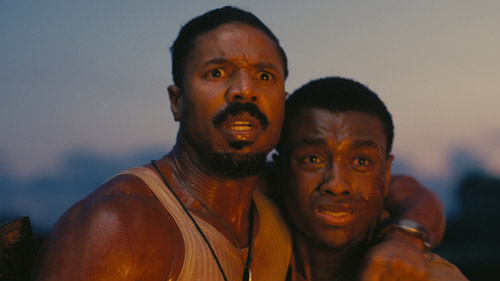
With Bong Joon Ho’s Mickey 17, Osgood Perkins’ The Monkey and now Ryan Coogler’s Sinners, 2025 is already the year of dual performances. While Joon Ho and Perkins’ scripts couldn’t keep up with their films’ top stars, Sinners offers a complete package that — much in the way of S. Craig Zahler’s Bone Tomahawk — transforms its B-movie premise to an instant classic.
After surviving World War I and thriving in Chicago’s criminal underground, twins Smoke and Stack (Michael B. Jordan, Black Panther) return to their Mississippi hometown with a stolen fortune in tow. They quickly take their little cousin Sammie (Miles Caton) under their wings as they prepare to convert a dilapidated sawmill in a juke joint. The twins reluctantly reignite old flames, assemble a tight-knit group of employees and prepare for a party the likes of which Clarksdale has never seen or allowed. Meanwhile, an Irish vampire (Jack O’Connell, Ferrari) starts building an undead army out of anyone he can sink his teeth into, starting with a couple of Klan members.
Given the film’s primary location and bullet-ridden bloodsuckers, From Dusk Till Dawn comparisons aren’t out of the questions. Honestly, both flicks skew more action than horror, shifting into a gear that overrides terror with tension. But that’s where their similarities end. Sinners plants its own stake into vampire canon with a vibrant cast, an immersive attention to detail and music that will undoubtedly wind up on more than a few Spotify Wrapped lists.

More than a group of quirky, grizzled players thrown together in a life-or-death situation, Coogler invests a significant amount of time in his first act developing his characters. Slim (Delroy Lindo, 2015’s Point Break) and Annie (Wunmi Mosaku, Deadpool & Wolverine) are notable standouts, the former building the film’s historical and musical foundation, whereas the latter drives Sinners’ emotional and spiritual strength. The red-eyed antagonist is more than a run-of-the-(saw)mill vampire, but an assimilator seeking to devour Black culture, music and being.
In creating this monster, Coogler also raises a fascinating question: If the art a community produces is so compelling, what’s stopping someone from colonizing it, recreating it and ultimately perverting it to the point that its original source is basically lost, like the effect created by so much of Elvis Presley’s music. It casts a shadow over Sinners, and while vampire media has more than a few lame and overly convenient tropes, none of them take too much away from the film. Instead, it wields them in a way that illuminates a complex systemic process and makes it accessible. In other words, Sinners is just as much of an effective social examination as it is a high-octane blockbuster. And surprisingly, neither seems to work against the other.
Any doubt Coogler could direct a compelling original film ends with Sinners. While very much not for children, it feels like the kind of horror flick you could captivate anyone with, like Ron Underwood’s Tremors or John Carpenter’s The Thing. In an era of never-ending content and films that wind up on streaming before anyone knew they had a theatrical run, Sinners helps keep cinema’s blood pumping strong. —Daniel Bokemper

